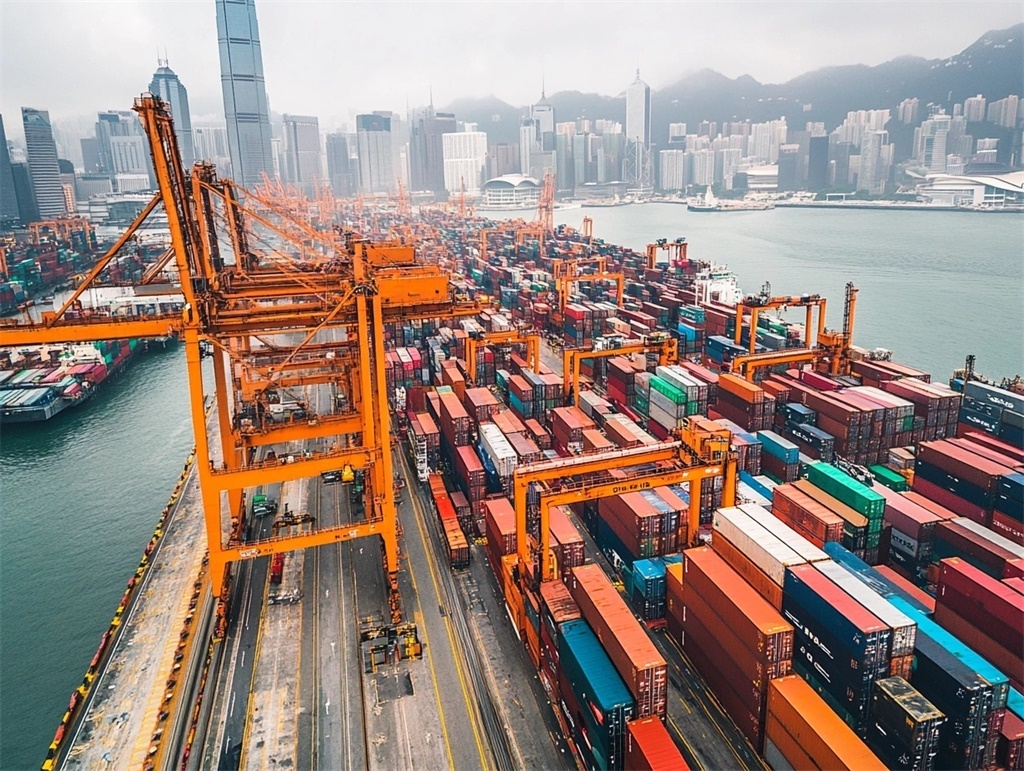引言
在数字化时代,跨境电商成为众多企业拓展国际市场的重要途径。然而,在这个竞争激烈的市场中,如何有效控制成本、提高效率,成为了每一个跨境电商卖家必须面对的问题。本文将深入探讨跨境电商中的各项成本,并提供实用的优化策略,希望能帮助POD服装行业的小伙伴们在跨境电商业务中取得成功。

了解跨境电商的成本构成
在开始讨论具体成本之前,我们POD服装小伙伴们需要先了解跨境电商的主要成本构成。这些成本包括采购成本、物流成本、平台佣金成本、推广成本、仓储成本以及退换货造成的货损成本。每一项成本都直接影响着您的利润空间,因此,合理核算和平衡这些成本至关重要。
跨境电商的成本有哪些?如何核算和平衡?
1. 采购成本
采购成本是产品从供应商处购买的价格。降低采购成本可以通过批量采购、寻找更优惠的供应商或通过谈判获得更好的价格来实现。此外,定期评估供应商的表现,选择性价比更高的合作伙伴也是降低成本的有效方法。但要注意的是,前期没有稳定销量的时候,采购的量不要过大,以避免滞销带来的库存积压,以及后续为了清库存不得不加大推广及降低销售价格带来的损失。
2. 物流成本
物流成本包括国际运输费用、关税、清关费等。选择合适的物流服务商和合理的运输方式可以显著降低物流成本。例如,使用海运代替空运,虽然时间较长但成本更低;同时,优化包装以减少体积重量,也能节省运费。而这其中根据不同的发货方式,又可以分为自发货和海外仓形式,其中最经典的就是亚马逊的FBM和FBA这两种发货,FBM是自发货形式,从国内到消费者手上,由卖家自己联系物流商,其优势在于灵活,可以有效控制库存,而劣势则在于配送时效比较长,容易被消费者放弃购买,而FBA则是将货物发送到亚马逊的海外仓库,销售后由亚马逊平台安排物流配送,优势是时效和服务可以得到保证,如果量大的话,平均运费也有一定的降低,对降低成本有不错的效果,而劣势则在于有极高的库存风险,如果没有有效的控制库存,一旦商品滞销,就可能带来极大的损失,同时,滞销品在仓储方面,也是一项费用,看似微小,但若一直不处理的话,就会像滚雪球一样变大,需要POD服装行业的小伙伴们及时关注,并及时清掉滞销的库存,以免带来更大的损失。
3. 平台佣金成本
不同电商平台收取的佣金比例各不相同。在亚马逊上销售服装,一般佣金率为5%-17%左右,速卖通平台则在8%左右,在入驻平台之前,提前了解并比较各个平台的佣金政策,选择最适合自己的销售渠道是非常重要的。推荐参考博文:跨境电商新手启航:亚马逊、Shopee、速卖通平台对比与选择攻略<<<
4. 推广成本
推广成本是为了提高产品曝光度而投入的广告费用。尽管推广对于增加销量至关重要,但过度依赖推广可能会导致成本过高。因此,制定合理的营销预算,结合SEO优化等自然流量获取手段,可以有效控制推广成本。
5. 仓储成本
仓储成本包括存储费用、管理费用等。采用FBA(Fulfillment by Amazon)服务可以帮助减轻仓储压力,但需要支付相应的配送费和仓储费用。根据实际需求灵活调整库存水平,避免长期积压,有助于降低仓储成本。
亚马逊服装生意的具体成本分析
亚马逊服装生意的佣金是多少?
在亚马逊平台上销售服装,通常会按照销售额的17%左右收取佣金,但今年的佣金有所变动,低于15美金的服装产品,佣金已经降到了5%,而15-20美金的服装产品,则降到了10%,20美金以上,依旧收取17%的佣金。此外,还需支付每件商品的固定手续费,具体金额取决于商品类别。
配送费和仓储费用又是多少?
使用FBA服务时,配送费和仓储费用会根据商品尺寸、重量等因素有所不同。一般来说,小件商品的配送费较低,而大件或重物则相对较高。详细的费用信息可以在亚马逊官方页面查询。
如何降低物流成本?
- 选择合适的物流渠道:根据货物特性和紧急程度选择最经济实惠的运输方式。
- 优化包装设计:减小包装体积,减轻重量,从而减少运费支出。
- 利用海外仓:建立海外仓库可以缩短配送时间,同时降低跨国运输成本。
FBA头程需要多少费用?
FBA头程费用涵盖了从发货地到亚马逊仓库之间的所有费用,包括运输、保险、清关等。具体费用因地区和服务商而异,建议咨询专业的物流公司获取准确报价。就目前来说,FBA头程有两种方式,一种是时间较长,但费用更加便宜的海运,一种则是时间较短,但费用更加昂贵的空运,以发往美国为例,海运的话一般报价区间在10-20元每公斤,而空运的价格则在30-60元每公斤之间,通常量越大,平摊到一公斤的费用会越低,但要注意的是,这里虽然报价是以公斤为单位,但实际上,无论是海运还是空运,都会以体积为先,如果重量只有10公斤,但是体积较大,按换算公式(一般是立方厘米/6000)计算是20,就会按20公斤来计算你的运费,所以在计算运费和打包产品的时候,一定要关注体积的大小,以避免运费计算错误,导致毛利率下降。
采购成本如何降低?
- 批量采购:大量订购可以获得折扣价。
- 寻找替代供应商:对比多家供应商报价,选择性价比最高的合作方。
- 谈判技巧:运用良好的沟通能力争取更有利的价格条件。
在不推广的情况下,是否有销量?
即使不进行大规模推广活动,通过SEO优化、社交媒体互动等方式仍然能够吸引一定数量的顾客。不过,适度的广告投放还是非常必要的,它能帮助快速提升产品或品牌知名度和市场份额。具体的推广策略及预算管理,就要由你的营销方案来定了。
去除成本后的毛利率定在哪个区间合适?
理想的毛利率应该根据行业标准和个人经营目标来设定。一般来说,目前跨境电商的毛利率在20%-30%之间较为合理。当然,这也取决于产品的独特性及其市场需求情况,需要具体研究和具体分析,但如果一个产品的毛利率较低,在不考虑推广策略的情况下,建议还是谨慎考虑是否上架该产品。
降本增效的方法
- 精细化运营:通过对数据进行深入分析,找出影响成本的关键因素,并采取针对性措施加以改进。
- 技术创新:引入自动化工具和技术,如ERP系统、AI客服机器人等,提高工作效率的同时减少人力成本。
- 供应链管理:加强与供应商的合作关系,确保供应链稳定可靠,减少因缺货或延迟交货带来的损失。
- 客户体验优化:提供优质的产品和服务,增强用户满意度,从而促进口碑传播,间接降低获客成本。
- 持续学习与创新:紧跟市场变化趋势,不断学习新的知识技能,保持竞争力。
结论
跨境电商的成功不仅依赖于优质的产品和服务,还需要对各个环节的成本进行精细管理和优化。尤其是各大跨境平台的不同规则下,往往还有不少隐性成本,比如专利的申请,包装费用,各种税费之类的变动,这些都是需要我们POD服装卖家关注的事项,每一件都可能增加您的成本,希望通过本文,能帮助您更多的了解跨境电商的成本组成,进行更精细化的成本控制和管理,在激烈的市场竞争中脱颖而出,实现可持续发展。
常见问题解答
1. Q: 在亚马逊上销售服装,除了佣金外还有哪些费用?
A: 除了佣金外,还包括每件商品的固定手续费、FBA服务费(如果使用的话)、促销活动费用等。
2. Q: 如何选择合适的物流渠道?
A: 根据货物性质、目的地距离及紧急程度综合考虑,选择性价比最高的物流方案。
3. Q: 什么是FBA头程费用?
A: FBA头程费用是指从发货地至亚马逊仓库之间的全部运输及相关费用。
4. Q: 怎样才能有效地降低采购成本?
A: 可以尝试批量采购、寻找性价比高的供应商以及通过谈判争取更优惠的价格。
5. Q: 不做推广真的能有销量吗?
A: 是的,通过SEO优化、社交媒体互动等方式也可以吸引部分顾客,但适度的广告投放仍非常重要。

